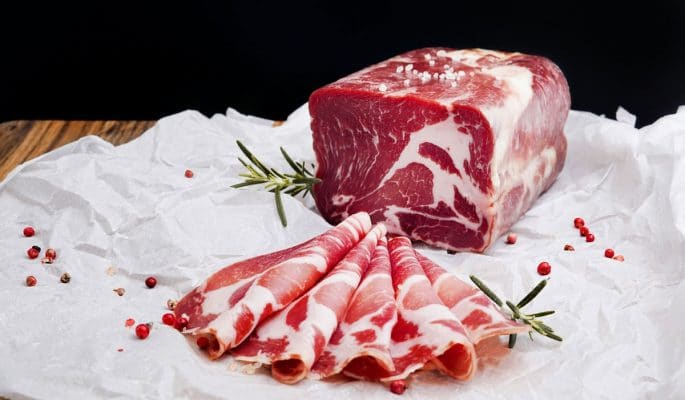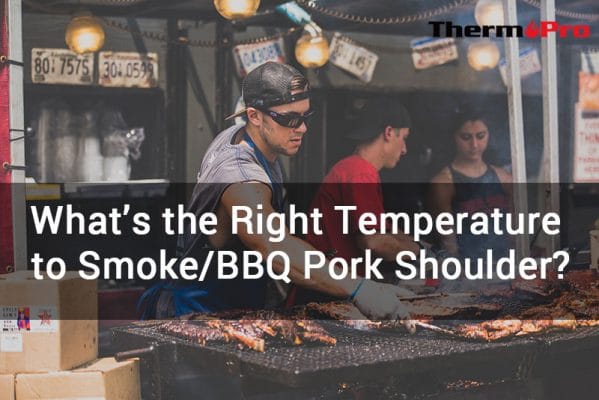The customer service team is always listening, taking notes, and quantifying complaints to ensure our products are continually improved. Due to selling directly to you, the customer, via Amazon, we can use product reviews to help us improve our existing products or help further development of new products.
Table of Contents
For many people, coking pork to a safe temperature can seem like a challenge. Once you know what temperature to cook pork in the oven, how do you accurately measure that temperature? Luckily, cooking pork loin perfectly each and every time is easier than you might think.
All you need is an understanding of safe cooking temperatures for pork and a meat thermometer, a simple and effective tool for measuring meat’s internal temperature. In this article, we cover safe cooking temperatures for pork, an easy guide for cooking the perfect pork loin, and how to check when pork is done with a meat thermometer. Keep reading to learn more.
Is it Safe to Eat Pork at 145° Fahrenheit?
For a long time, it was believed that pork loin needed to be cooked to a higher temperature than other meats at about 165° F. Many people also believe that consuming slightly pink pork is a health hazard. However, this temperature and color that is too white often leave pork loin dryer than you probably like it to be.
According to the Food Safety and Inspection Service, it is completely safe to cook pork to the recommended temperature for other meats, which is 145° F. At this internal temperature, your pork tenderloin will be completely safe to eat while remaining juicy and delicious, just like a tenderloin should be. Don’t be afraid of a slightly pink center, as this is a sign that your pork loin didn’t dry out in the oven.
Check out recommended cooking temperatures for pork below:
Pork Temperature Chart
- Pork Loin: 145° F – 160° F
- Tenderloin: 145° F – 160° F
- Pork Chop: 145° F – 160° F
- Ham: 140° F
- Ribs: Until Tender
- Ground Pork: 160° F
- Pork Shoulder: Until Tender
- Pork Cutlets: Until Tender
How to Know When Pork Loin is Done?
While it is possible to check that a pork loin is done without a meat thermometer, the handy tool makes the process a lot easier and keeps pork consumption safer and more delicious and tender. Below, we have listed both ways that you can check whether or not pork loin is finished cooking once you remove it from the oven.
1. How to Check Whether Pork Loin Is Done Without a Thermometer?
It can be difficult to accurately determine if pork loin is done without a meat thermometer. The most accurate way to do this is to cut through the loin at its thickest part and look at the color.
Pork loin will generally turn completely white at about 160° F, so you will know the pork is done when it becomes mostly white with a slightly pink center.
2. How to Check Whether Pork Loin Is Done with ThermoPro Thermometer?
Using a reliable meat thermometer, like a ThermoPro Meat Thermometer, allows you to accurately determine that pork loin is cooked to a safe temperature each and every time without cutting it open.
Once you remove your pork loin from the oven, allow it to rest for a few minutes to ensure juices don’t escape once it is pierced by the thermometer. Then, insert the thermometer into the loin at its thickest part, all the way to the meat’s canter.
Within seconds, the meat thermometer should give you an accurate temperature reading. You want this temperature to be at least 145° F, and we don’t recommend anything over 160° F if you want a juicier piece of meat.
How to Keep Pork Loin from Drying Out?
Why Is Your Pork Loin Dry?
Pork loin is particularly lean meat. This means that it is dried out quicker than other meats if it is overcooked because it isn’t as fatty as other types of meat you might be used to cooking and working with. This happens far too often because many people are misguided about the safe internal temperature for pork.
If you find that your cooked pork loin keeps coming out of the oven-dry, then you are probably overcooking it. This happens far too often, as people believe that pork’s internal temperature needs to be higher than is actually recommended for safe consumption.
Once pork loin’s internal temperature starts creeping over 145° F, it is put at risk for drying out and losing all of the juicy flavors that you love. This is especially true once the internal temperature reaches 160° F and above.
How to Prevent Pork Loin Dryness?
The appeal of pork loin as a cut of meat in the first place is that it is tender, juicy, and delicious. You don’t want to begin cooking it hoping for these results and then end up with a dry and flavorless piece of meat.
The best thing you can do to prevent pork loin dryness is to carefully monitor the temperature during cooking. This is most easily achieved through the use of reliable and convenient meat thermometer. This tool removes the guesswork from your cooking, preventing both dryness and unsafe meat.
If you make sure that your cooked pork loin’s internal temperature is at or slightly above 145° F when it comes out of the oven, then it is sure to be tender, juicy, and slightly pink in the center when you cut into it. This foolproof method will leave you with a delicious meal every time.
Another tip you can follow if you want to ensure that your pork loin doesn’t dry out before you eat it is to allow the loin to rest on the counter before cutting. Cutting into the pork directly out of the oven allows juice and flavor to escape, so give it a few minutes to rest beforehand.
Final
We hope that this article gave you some insight on how to cook pork loin perfectly each and every time. Keep in mind that slightly pink pork, especially when working with loin cuts, is perfectly safe for consumption. We highly recommend using a ThermoPro Digital Meat Thermometer to keep an eye on pork’s internal temperature, ensuring a tender and delicious meal out of the oven with no stress or worry.









